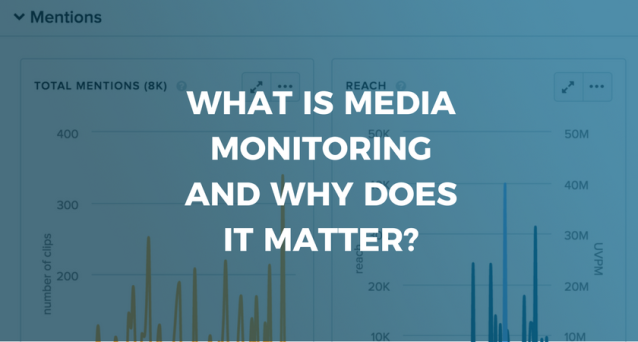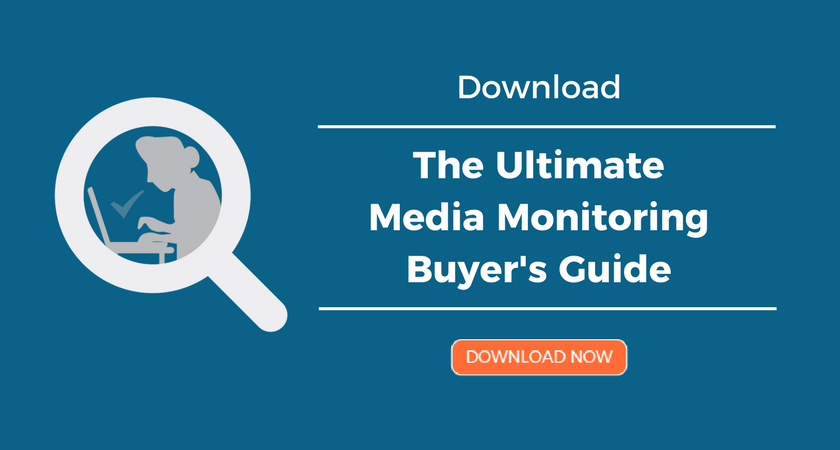“Don’t pay any attention to what they write about you. Just measure it in inches.” — Andy Warhol
As a PR pro, after every communications campaign, you may often ask yourself — what was the impact of my efforts? Consider this familiar scenario:
You have a great product or service, and you’re excited to get your story out to the market. You craft the perfect pitch and reach out to the influencers who have served you well in the past — as well as some new ones who cover your space and seem like a good fit for your audience. Maybe you got some decent pick up and had your story featured in an article. And then, you wonder …
Was the story picked up?
Did the story extend beyond online news coverage?
Was the story shared on other channels?
Did the message resonate with my audience?
In other words – what was the outcome of your outreach? To answer this critical question, you need a comprehensive media monitoring program.
But first, what exactly does media monitoring mean?
What is Media Monitoring?
Back in the old days of PR (screen fades to grainy black and white…), comms teams had to suffer through the tedious process of flipping through stacks of newspapers and magazines, searching for any mention of their brand. Once located, these articles would be clipped out like store coupons and added to books (yes – that’s why we still call them “clip books”!) to demonstrate the “results” of a PR campaign. The same was true for watching hours of TV news or listening to shows on the radio. It was a painstaking, manual process which provided a frequently inaccurate answer to the very simple question “Did we get coverage?”
Fortunately, media monitoring has evolved enormously over the years as content was digitized, social media became mainstream, and artificial intelligence made its way into corporate systems.
So, what does a modern media monitoring program look like? At its foundation, monitoring should have the following three components:
1. It monitors across all relevant platforms.
A comprehensive view of your brand can only be achieved by continuously scanning for mentions across all channels where your audience might engage, including:
- Print – traditional printed news, such as newspapers and magazines.
- Online – websites, blogs, online media sites.
- Social Media – Twitter, Instagram, Facebook, YouTube, etc.
- Broadcast – television and radio.
2. It is automated and sophisticated.
With modern software, the vast majority of monitoring work should be automated and do all of the tedious, non-strategic tasks for you. This means going beyond basic mentions of your brand, keywords, and competitors to include other key components of monitoring – such as auto-sentiment toning (labeling each mention as positive, negative, or neutral) and analyzing content for brand prominence. The latest advances in machine learning and artificial intelligence make these tasks not only automated but accurate as well.
3. It enables deeper insights to inform future campaigns.
It is not enough to just pull massive amounts of data, and then leave it for the busy comms professional to wade through. A good monitoring program makes it easy to analyze the resulting data sets in simple, flexible ways, making it possible to glean insights about how messages resonate with audiences. This data can then be used to fine-tune future campaigns and improve messaging and influencer strategies.
Why You Need Media Monitoring
Once you understand how media monitoring works, it’s important to consider how media monitoring can impact your communications efforts.
With today’s 24/7 news cycle and always-on digital channels, you need to monitor everything that pertains to your industry — all of the time. Why? Monitoring can help you:
- Improve messaging by understanding which messages resonate with your customers
- Gain market intelligence by tracking your competitors and key topics within your industry.
- Prevent a crisis or cut down on response time.
- Recognize and capitalize trends in your industry as they crop up.
- Adjust campaigns as they happen, especially if your messaging isn’t resonating with the right audiences.
- Attribute value by better mapping campaigns to specific business objectives.
- Understand which influencers are having the most impact on your brand.
And these use cases are just the tip of the iceberg. Not sure if media monitoring is right for you, or curious to learn more? Check out our Ultimate Media Monitoring Buyer’s Guide for a deeper look.
About
Jen Jones is the VP of Product Marketing at Cision. Connect with her on Twitter.
from Blogs http://ift.tt/2G20QGt


No comments:
Post a Comment